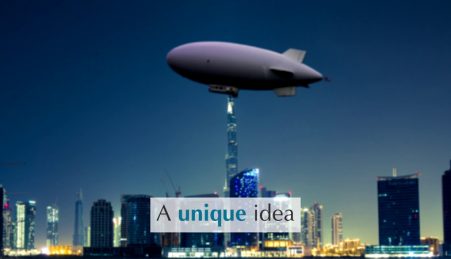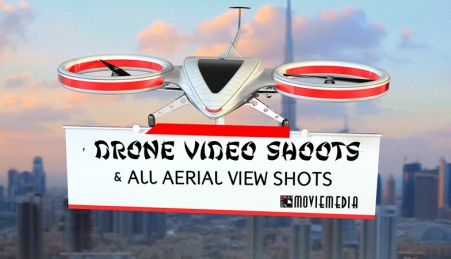Keep a checklist handy to ensure you have all you need before you head out to shoot a video
It’s easy to forget an essential item. So go over a check list before you start. Even experienced professionals do it. Here is a basic checklist:
1. Camera 2. Tapes/memory cards 3. Charged batteries 4. AC power supply 5. Microphones 6. Microphone batteries 7. Lens cap 8. Cables 9. Lens cleaning cloth
10. Headphones 11. White-balance cloth 12. Script 13. Tripod 14. Lens filters
Get some good close-up shots
You will be amazed at how close–up shots bring your production to life. Television is a close-up medium, so go for some meaningful close-ups of your subject or product–Imagine how good close–ups of facial expressions of people tell the story so effectively–it has so much more impact than a wider shot of the person.
Getting physically close to your subject is better than zooming in
When you want close-ups it’s better to get closer to the subject that you’re filming than zooming into a shot. You get a better visual perspective and also better sound quality.
Using a telephoto lens
Remember that if it is a close up shot you want using a telephoto lens is not necessarily the answer, unless the situation and subject demands such a shot. Some points to take note of: You lose depth of field as only things in a narrow range remain in focus; the shots can be jerkier than a wide angle shot and focussing is harder to do as everything is magnified.
Get multiple shots of a scene
Getting different perspectives and angles of a scene helps liven up a video while editing, as long as you don’t overdo it. It’s always good to have a choice of shots to choose from when the film is on the editing stage.
Film ‘cut-aways’ and not just your subject
While you are filming your subject take time to take shots of the surrounding scene that is relevant to the subject. These could be long shots of the scene or close-ups of objects, expressions or reactions of people around etc. These shots allow you to edit out parts that you don’t want and also remove the monotony of a single shot or view. But remember that such “cut-aways” should be appropriate to the subject or theme of the video.
Film at the same height as your subject
Adjust the height of your camera placement to match the height of what you’re filming, ie your camera has to be at the same ‘eye level’ to avoid distortion (unless you want the distortion for dramatic effect.)
When to use a tripod
Use a tripod when you need a steady shot. If you don’t have a tripod place the camera on a stable object such as a table etc. Remember the tripod you get should be meant for video cameras and not still cameras, also they should be able to carry the weight of your camera. Tripods range from small table top ones to large ones meant for heavier cameras. The locks on the tripod should be strong enough to hold the camera in any position, by themselves. It shouldn’t wobble while using the camera and you should be able to do smooth pans and tilts.
Don’t get carried away while editing
While editing use only the shots which are relevant to the subject or theme of the video. Keep in mind what the video is for and what it is expected to do. It is easy to get carried away by shots which looks beautiful but which may not be relevant to the story. Or you may be tempted to use such shots for longer than required. Editing means using only the shots you require. Dump shots which are out of focus, out of topic, bad sound quality, long pauses between one thing and the next etc. You have to make some hard decisions, but it is worth it when you get a clean, crisp video which tells the story effectively. Nothing is more tedious than watching a video that’s much longer than it needs to be.
Read the manual
Many people try the ‘trial and error’ method as they are too lazy to go through the manual. Even experienced professionals read the manual and practice using any new equipment, testing its new features etc, prior to an assignment. They don’t try to figure it out while on the job. Manuals are there for a reason, so take time to read it and try out the various features and applications while following the instructions.
Out-of-focus shots
Is your shot out-of-focus? It could be for any one of the following reasons:
- You might be too close to the subject for the lens to get into focus, so step back a bit
- If it goes out of focus again then adjust the focus (many people forget to do so, its just one of those things you forget when in a hurry to get a shot)
- If proximity to the subject is not the problem zooming out helps and stay zoomed wide-angle, try moving in closer.
Wireless microphones
Wireless microphones are useful when recording in a noisy environment and you can’t get close enough to what you’re taping. Note that there are mikes with different pickup patterns and you need to be sure of where and what you are filming to get the right ones. For e.g., omni directional mikes pick up sound from all directions, unidirectional mikes are designed to pick up sound from one direction, super directional mikes are heavily optimised to pick up sound from just one direction, and noise-cancelling mikes will only pick up sound directed at them in a specific way.
Control lighting
This is the trickiest part for many amateur video enthusiasts. A good thumb rule to remember is to observe how the sun lights up things in the mornings and evenings, i.e,
your light should be lighting up the front of what you’re filming, and usually to one side and above, rather than head on. You will only get dark silhouettes if the light’s behind what you’re filming. Placing a light source front on, directly above, directly beside in front of the subject can create undesirable shadows. If you are filming outdoors and have no control over the light situation you can use reflector boards or white cardboard to bounce more light wherever you need it.
Try to take the picture as you would like to see it framed and not rely on photo editing programs.
People tend to rely a bit too much on Photoshop, Picasa and other such programs to help fix up their photos these days. One thing that people often do is to take wide shots knowing that they can crop later. While doing do is an easy way to frame the picture better in the comfort of your home with time on your side, it also reduces the quality of the picture. Try to take the picture as you would like to see it framed and not rely on the cropping features of photo editing programs. Not only does it maintain the quality of the image but colours and shadows are better represented as well, giving a more dynamic shot. A good way is to always look around all four sides of the view finder or LCD screen to make sure things are aligned and that you are not cropping someone’s toes or head. Try and look at the top and bottom to make sure the main image is in the middle and that there is not too much “waste” of space within the frame. When taking landscape pictures make sure that the horizon is aligned and straight. Carrying a mini tripod with you at all times also helps in taking well framed pictures.
Audio tip: Keep your ears open for interesting background sounds
We have advised you in previous tips to get cut away shots and different perspectives on shooting. Similarly, even when a good shot is not available, keep your ears open for interesting sounds that might be of use under other shots in the editing phase. Record these sounds whenever possible, you never know when you might need it to create a more dynamic scene in a video.









